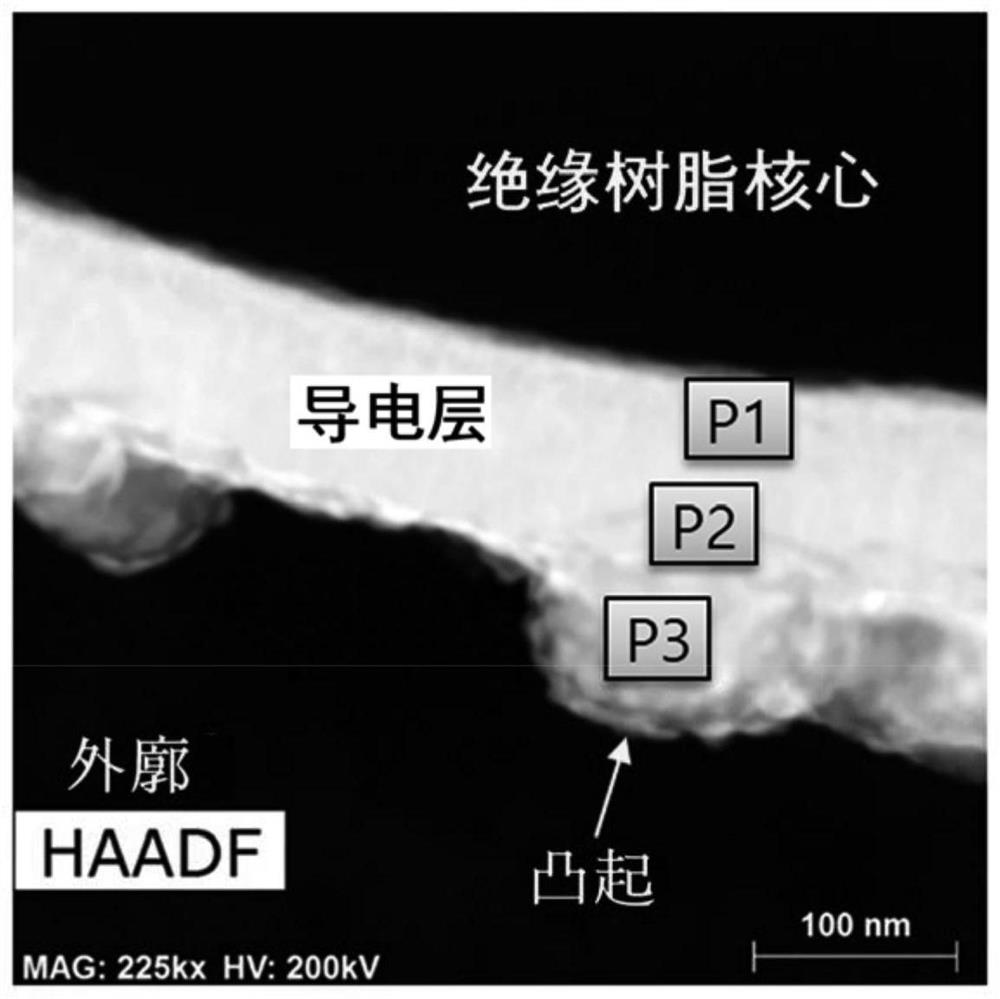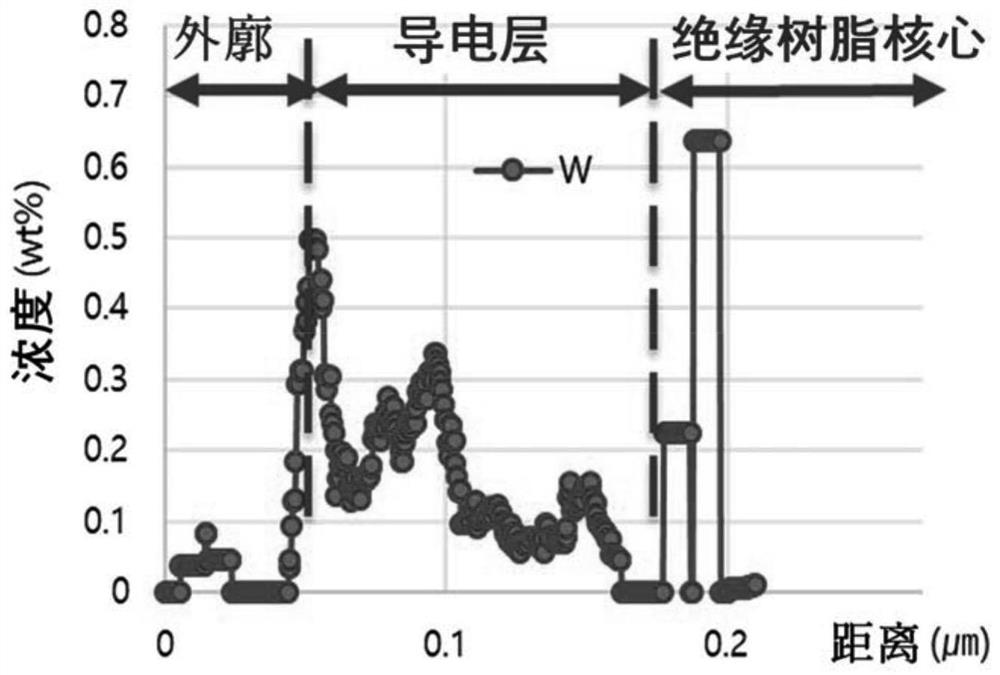Conductive particle, method for producing same, conductive material, contact structure, electrical component, and electronic component
A technology of conductive particles and manufacturing methods, applied in the direction of conductive materials dispersed in non-conductive inorganic materials, electrical components, printed circuit components, etc., can solve the problem of reducing the limited contact resistance and not taking into account the increase in the resistance of the conductive layer of conductive particles, etc. problem, achieve the effect of reducing initial contact resistance, improving contact reliability, and low initial resistance
- Summary
- Abstract
- Description
- Claims
- Application Information
AI Technical Summary
Problems solved by technology
Method used
Image
Examples
Embodiment 1
[0119] Embodiment 1: Manufacture of Conductive Particle 1
[0120] 1) Manufacture of insulating core resin particles (S1a)
[0121] Put 800g of monomer trimethylolpropane ethoxylate triacrylate (TMPETA, Trimethylolpropane ethoxylate triacrylate) and 50g of 1,6-hexanediol ethoxylate diacrylate (HDEDA, 1,6- Hexanediol ethoxylate diacrylate) and 800g of divinylbenzene (DVB, Divinylbenzene) and 5g of benzoyl peroxide (BPO) were added and then treated in a 40kHz ultrasonic cleaner (bath) for 10 minutes to prepare the first solution.
[0122] Dissolve 500 g of dispersion stabilizer polyvinylpyrrolidone (PVP, Polyvinylpyrrolidone)-30K and surfactant dioctylsulfosuccinate sodium salt (Solusol, Dioctylsulfosuccinate sodium salt) to 4,000 g in a 5 L polypropylene (PP) beaker deionized water to prepare the second solution.
[0123] After putting the above-mentioned first solution and second solution into a 50L reactor and adding 41,000g of deionized water, it was treated with an ult...
Embodiment 2
[0142] Embodiment 2: Manufacture of conductive particle 2
[0143] The processes up to the catalyst treatment process among the processes of the above-mentioned Example 1 were performed in the same manner, and then the gold plating process was performed as described below.
[0144] 3-i) Dispersion of the insulating core (S2a)
[0145] After putting 3,500g of deionized water into a 5L reactor, dissolve 265g of nickel sulfate as a Ni salt, 5g of sodium acetate as a complexing agent, 2g of lactic acid, and 0.001g of Pb-acetate as a stabilizer And 0.001g of sodium thiosulfate, 1g of polyethylene glycol (PEG)-1200 and 0.02g of triton (Triton) X100 as a surfactant to produce a gold plating solution (a-2). The above catalyst-treated insulating core resin fine particles were thrown into the produced (a-2) solution, and then dispersion treatment was performed for 10 minutes with an ultrasonic homogenizer (Homogenizer). After the dispersion treatment, the pH of the solution was adju...
Embodiment 3
[0151] Embodiment 3: Anti-rust treatment of conductive particles 1
[0152] 20 g of SG-1 (MSC; product name) was added to 500 g of deionized water, and the temperature of the solution was maintained at 60°C. Ultrasonic treatment was performed for 5 minutes after 10 g of the conductive particles produced in Example 1 were dropped into the solution maintained at 60°C. Antirust-treated conductive particles are obtained by performing washing, filtering, and drying processes on the ultrasonically processed conductive particles.
[0153] Whether the antirust treatment was successfully completed was confirmed by confirming whether the weight ratio of the conductive particles floating on the deionized water reached 98% or more when the dried and antirust treated conductive particles were dropped into the deionized water.
PUM
| Property | Measurement | Unit |
|---|---|---|
| diameter | aaaaa | aaaaa |
Abstract
Description
Claims
Application Information
 Login to View More
Login to View More - R&D
- Intellectual Property
- Life Sciences
- Materials
- Tech Scout
- Unparalleled Data Quality
- Higher Quality Content
- 60% Fewer Hallucinations
Browse by: Latest US Patents, China's latest patents, Technical Efficacy Thesaurus, Application Domain, Technology Topic, Popular Technical Reports.
© 2025 PatSnap. All rights reserved.Legal|Privacy policy|Modern Slavery Act Transparency Statement|Sitemap|About US| Contact US: help@patsnap.com



